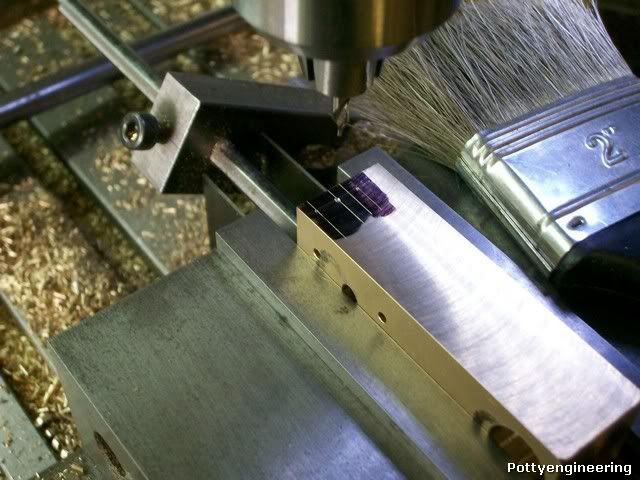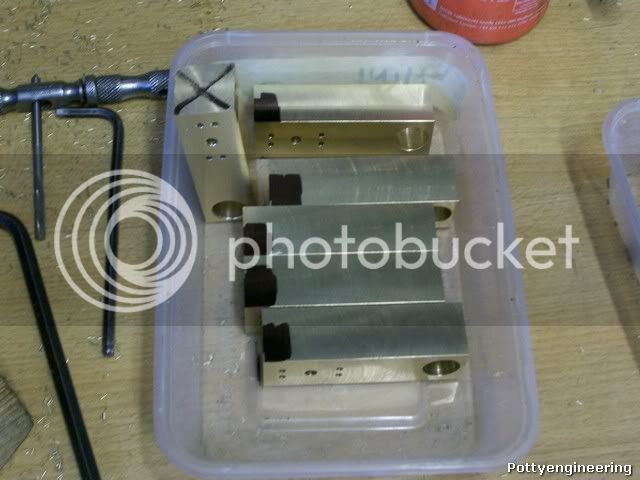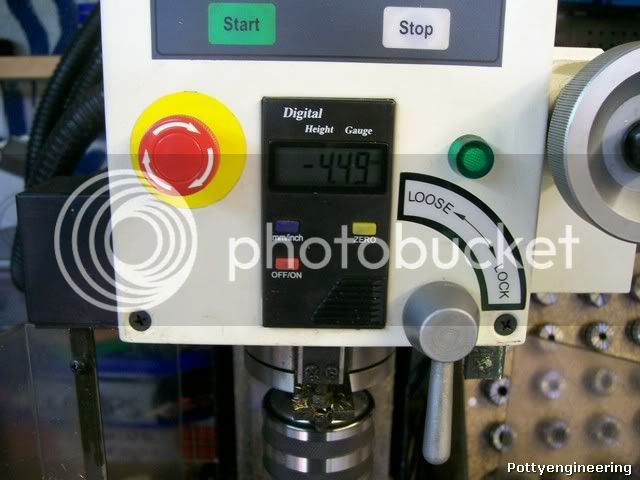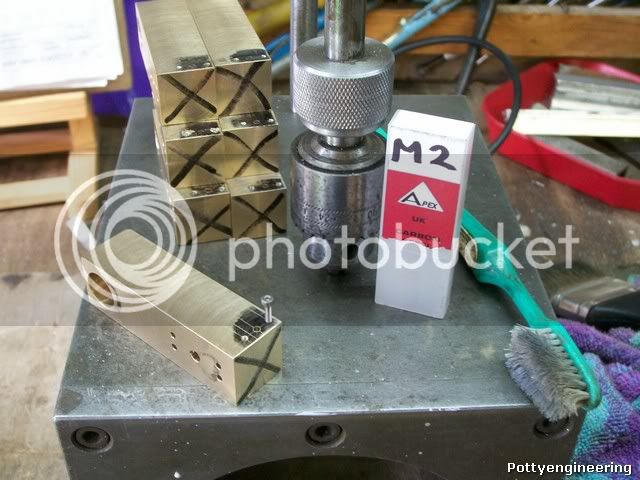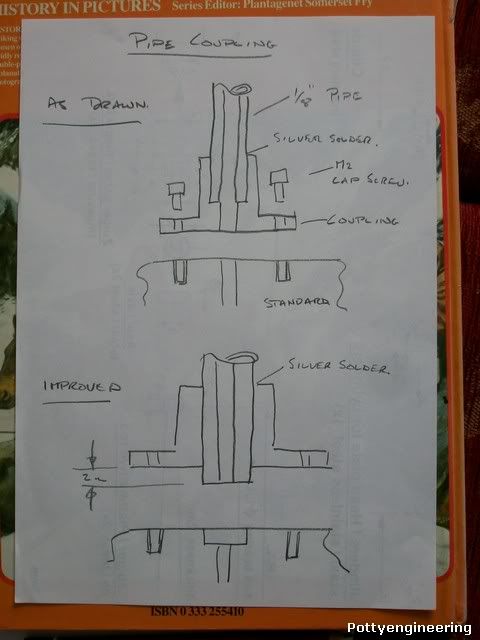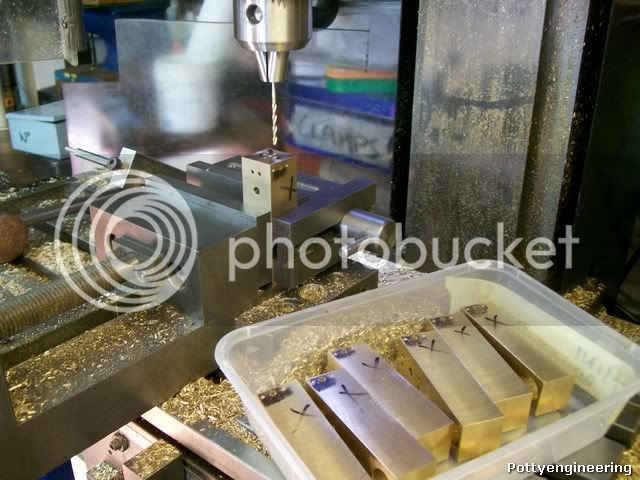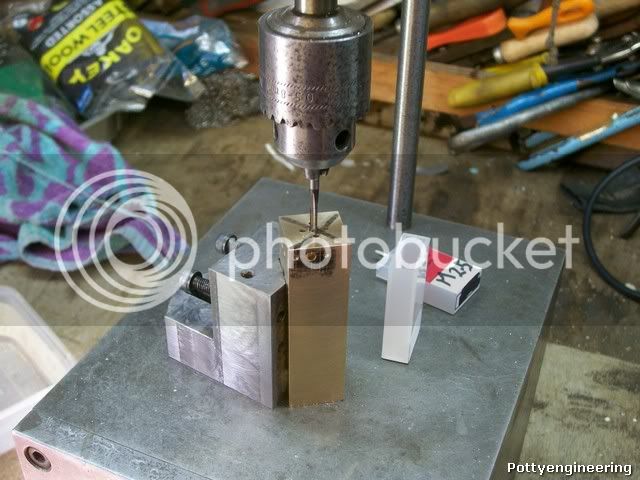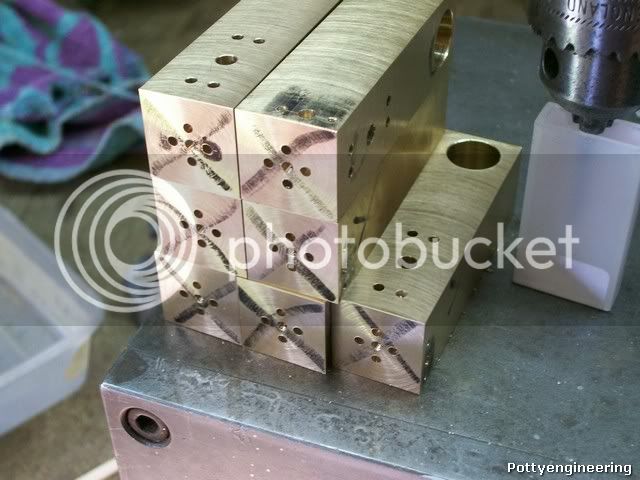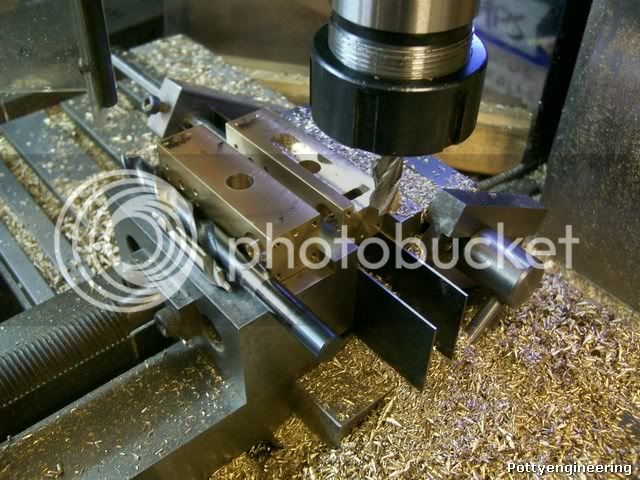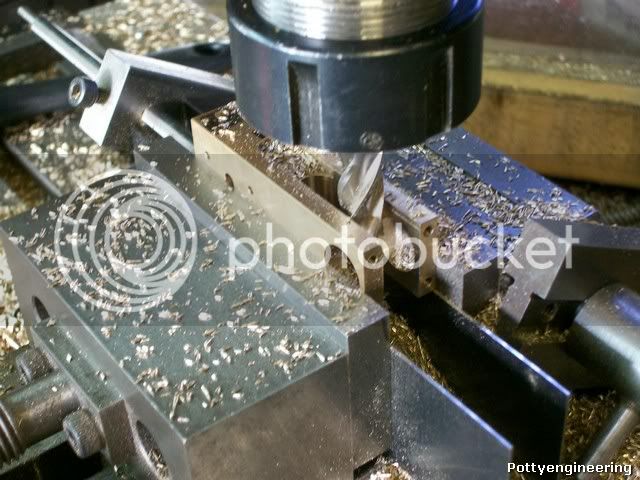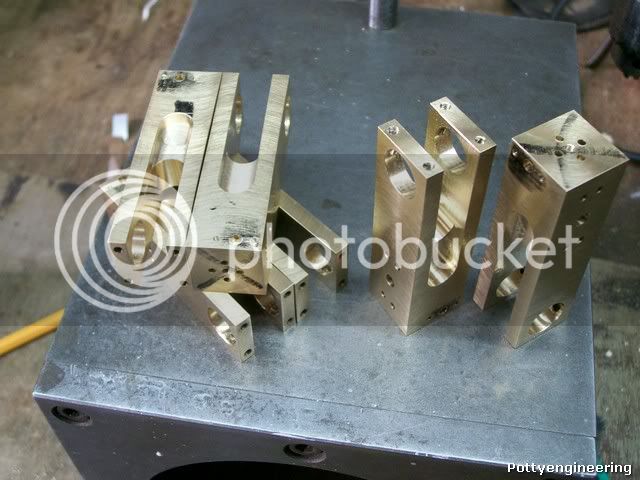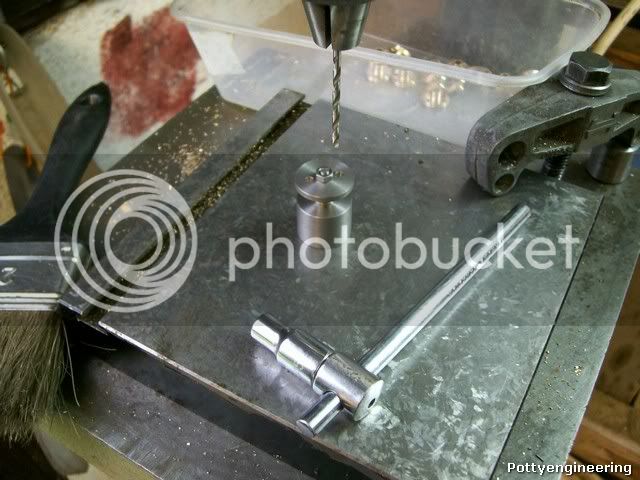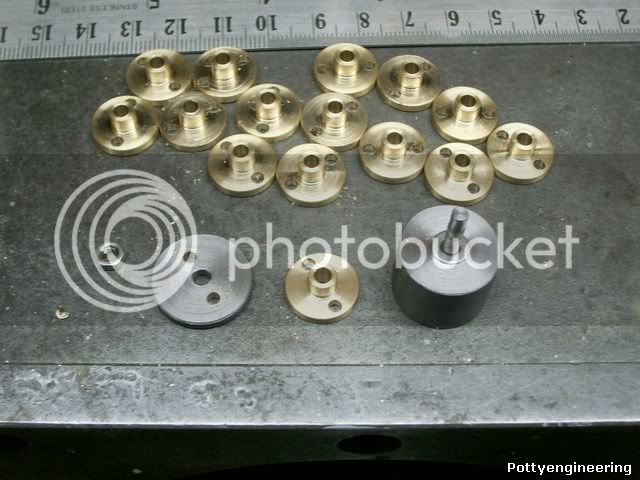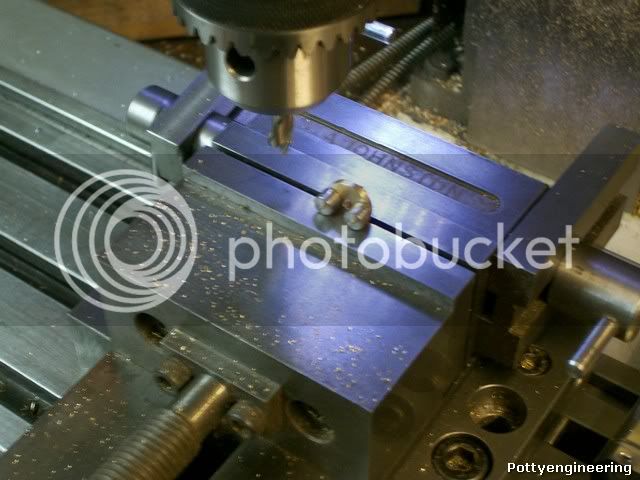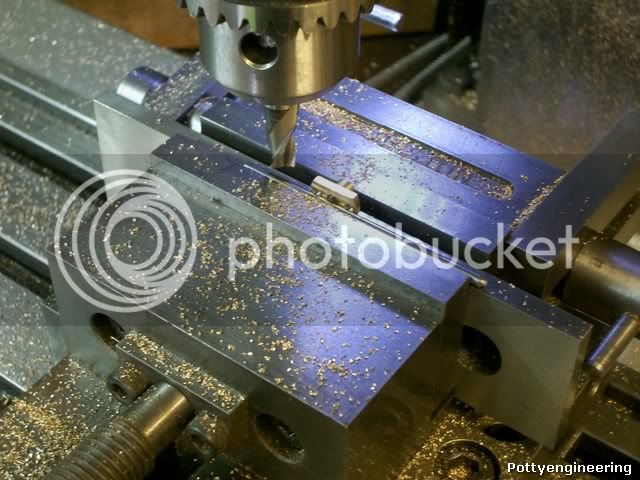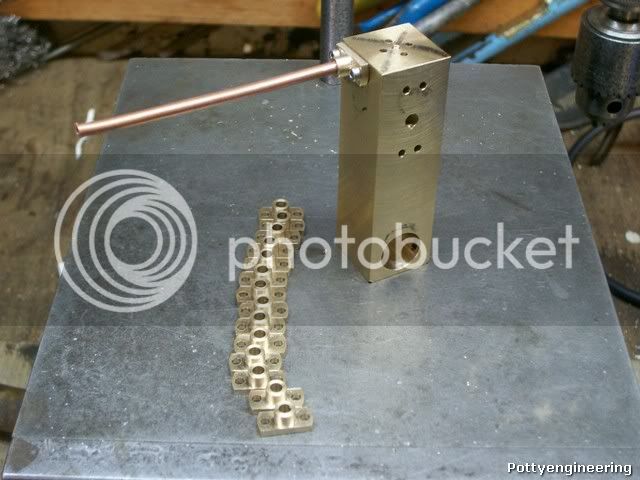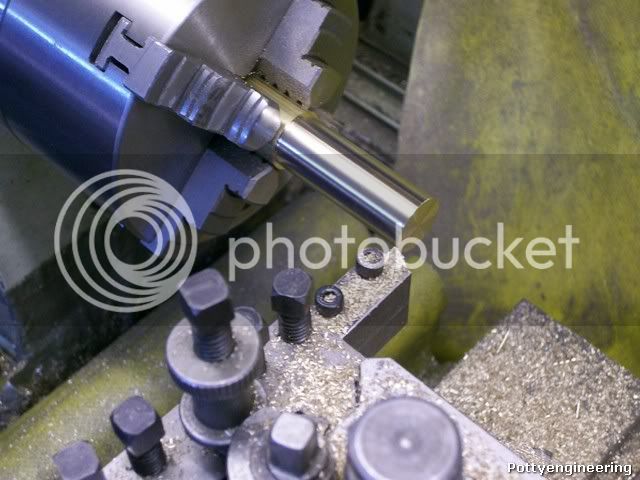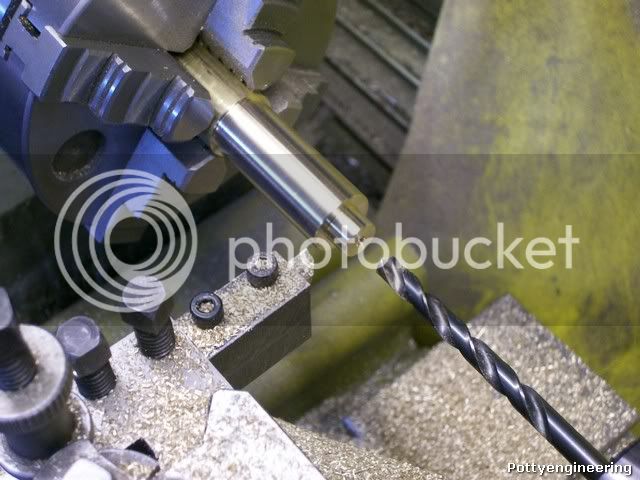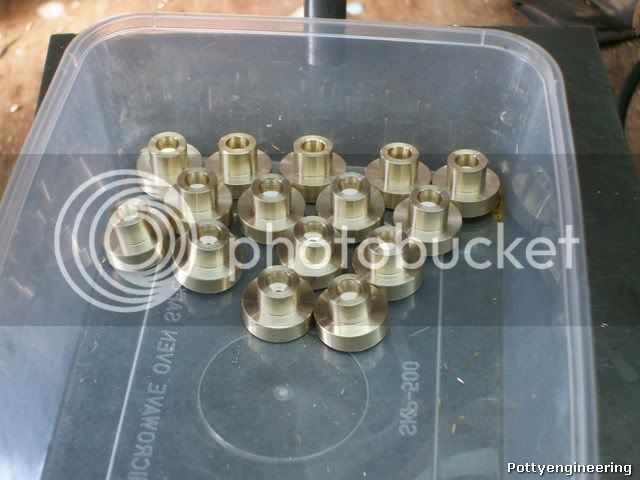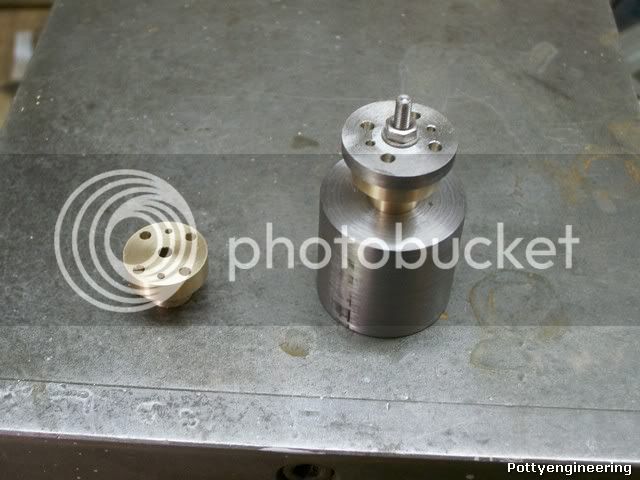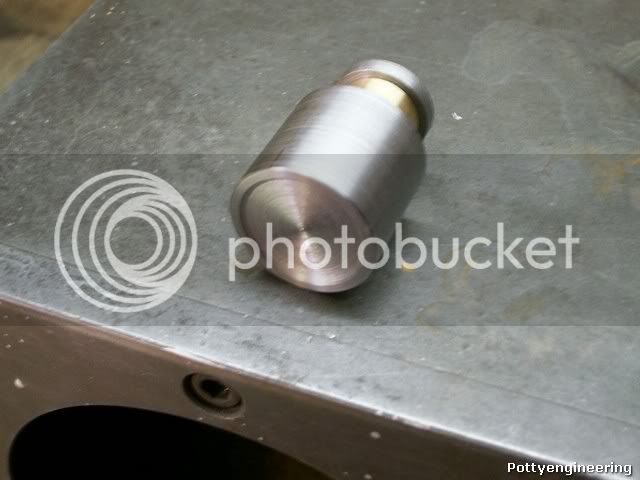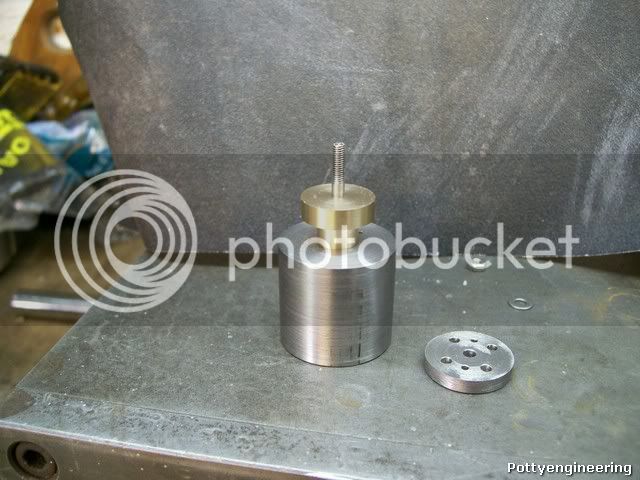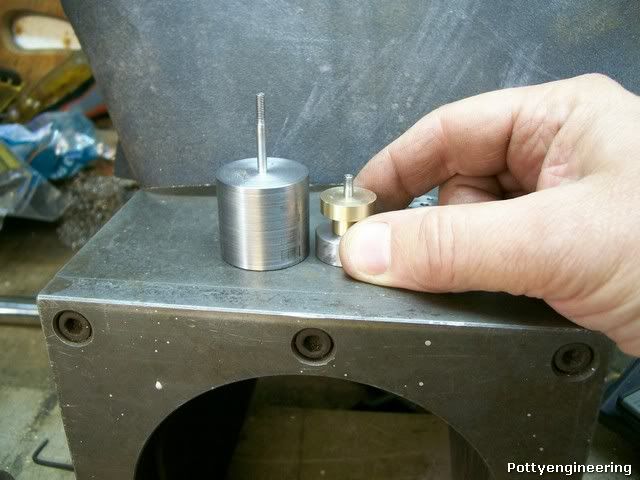They are coming along very nicely now Stew.
I know that soon you will be cutting the slot in the standard for the flywheel.
It is now where you can make a totally different looking engine, and rather than have the flywheel inside the standard, it could be mounted on the engine takeoff, so the big slot would not be required. In fact the engine runs perfectly well without the flywheel on at all, as shown by my horizontal version.
BTW, the tip on cleaning off is a very good one, I always clean off before taking the part out of the vice, that way, there is even less chance of things getting down into the jaws and parallel area, and it doesn't knock the paras out of position.
John
I know that soon you will be cutting the slot in the standard for the flywheel.
It is now where you can make a totally different looking engine, and rather than have the flywheel inside the standard, it could be mounted on the engine takeoff, so the big slot would not be required. In fact the engine runs perfectly well without the flywheel on at all, as shown by my horizontal version.
BTW, the tip on cleaning off is a very good one, I always clean off before taking the part out of the vice, that way, there is even less chance of things getting down into the jaws and parallel area, and it doesn't knock the paras out of position.
John





